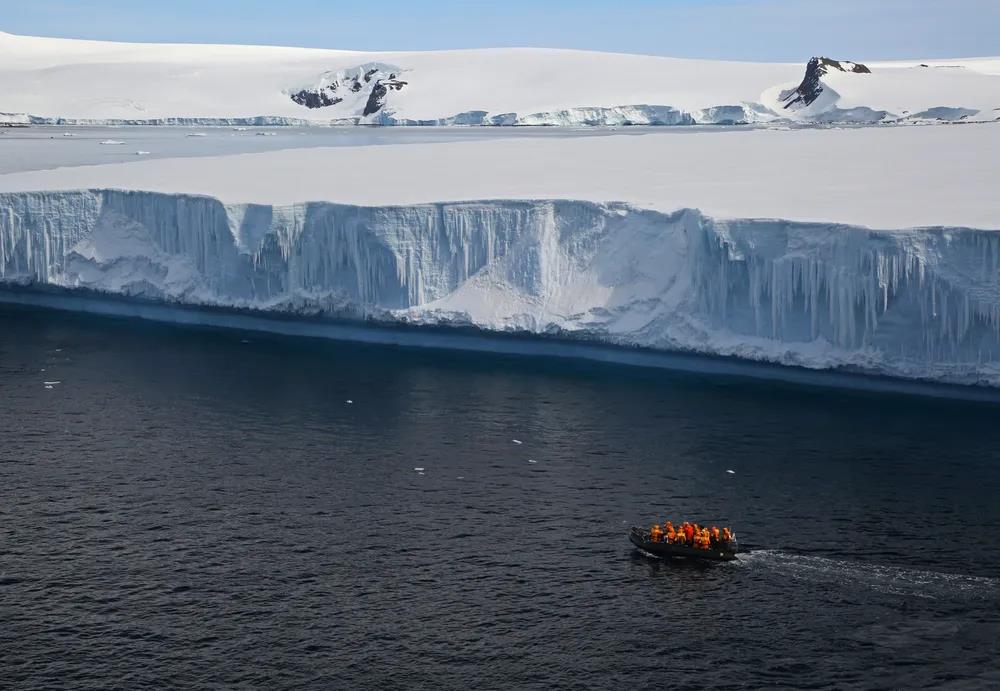Months into this pandemic, covid-19 is still wreaking havoc, forcing firms across the world to lay off employees, cut costs and grapple for government support. How can an organization get through a crisis like this? Is it possible to convert threats into opportunities? And how did some of them end up losing this fight?
Zhang Zhixue, professor of the Department of Organization and Strategic Management under Peking University’s Guanghua School of Management, uses historical events and real-life cases to illustrate a set of survival rules in the following article based on his Feb. 11 online lecture that was streamed by some 4.3 million people.

In 1914, Sir Ernest Shackleton and his crew sailed for the Antarctic aboard Endurance from Britain. The following year, the ship was stranded by pack ice off Antarctica, and Shackleton gave the order to abandon ship, hoping to march cross a large flat floe to their destination. However, the exhausted group had to camp on the floating ice for months, subsisting on ice, snow and penguin meat. As the floe drifted and broke, Shackleton ordered his men into the lifeboats and they reached the inhospitable Elephant Island days later.
With crew members on the verge of death and rescue via chance discovery extremely unlikely, Shackleton, together with a few companions, embarked on an open-boat journey to the South Georgia whale station for help. He left a note for the crew, saying that he would definitely come back to rescue them, but if he fail to do so, they should know that he has tried his best. However, he warned that they could only read the note 20 days later.
Despite harsh weather, Shackleton finally reached the station on May 20, 1916. Only three days later, he set off once again to rescue those left behind. After three failed attempts due to tough sea conditions, the rescue ship reached the Elephant Island on Aug. 30 and the crew members were saved. When later asked how could they hold on for so long, a crew member said they believe that Shackleton would succeed and even if he didn’t, he’d tried his best — almost the same as what was written in that note. The crew member left with the note didn’t even open the note, saying that they firmly believe that Shackleton would come back for them even months afterwards.

Eight rules for survival during a crisis can be gleaned from Shackleton’s example and adapted to modern organization management.
1. Solidarity for a common goal. When a crisis strikes, an organization should immediately unite all members to work towards a common and clear goal. This should be done as quickly as possible to switch the previous goal to the current one to ensure a correct direction for the entire group, and details could wait.
2. A leadership that is proactive, reasonable, resilient and example-setting. Shackleton was a perfect leader for his abilities to remain calm, brave and optimistic so as to maintain the crew’s morale during extreme difficult situations. When marching on the floe, he took the lead to ditch unnecessary but expensive things to reduce their loads, reminding us that the values of things can change in different scenarios and people should treat them accordingly.
3. Adhesion as in mutual trust and collective optimism. Faith and mutual respect should be strengthened among a group and everybody should be aware that they are in this together, regardless of position and status. It should be noted that conflicts are inevitable amid increasing pressure and must be kept under control.
4. Action. As a crisis results in huge pressure and disrupts normal life and work, it’s important to ensure that every member always has a job to do so that they can keep focused and away from fear and other negative emotions. Shackleton even mobilized the crew to play football when on the floe.
5. Efficiency. A group should be divided into multiple teams in a timely manner to carry out their specific jobs. It’s almost impossible to figure out a grand scheme to cope with the changes at the start, and small teams can better gather crucial information to help the entire group find a way forward.
6. Agility. Members should be encouraged to look for any kind of data or clues to help the group survive, and every piece of information they provide should be carefully reviewed in order to create a big picture and draft a plan in response. In the case of the covid-19 pandemic, firms should encourage their employees to use their own resources and connections to find business opportunities and improve operations.
7. Outside help. Connect with outside groups to break barriers and make use of their help so as to keep one’s supply chain intact and flexible.
8. Mental structure. As a crisis usually disrupt or even topples the conventional organizational structure a group relies on, a new psychological structure should be available as a replacement. This rule will be illustrated in the following example.

In 1949, the Mann Gulch fire broke out in Montana and a team of 15 smokejumpers were mobilized to fight the fire. When the team’s foreman, Wagner "Wag" Dodge, suddenly realized that the fire had jumped closer and the flames, devouring the dry grass along the way, rushed towards them even faster, he issued an order to throw away their packs and heavy tools and set fire to the grass around them with a match to create an escape fire to lie in so that the main fire would burn around them. However, the crew failed to understand him and continued to race higher up the slope, hoping to outrun the fire. In the end, only Dodge and two others made it out alive.
The severity of this fire was seriously underestimated. It took 450 people and five days to finally tame the wild fire, but the first crew thought they could keep it under control by the next morning. As the intensity and speed of the fire caught them off guard, the team’s original organizational structure completely collapsed.
The team panicked in the face of the crisis and failed to quickly grasp and analyze the emergency at the moment. With no time for explanation, Dodge’s order to ditch some equipment and retreat confused the team. Even when he set the escape fire to protect him and others, the team failed to understand his action. Staring dangers in the eye, they were too afraid and anxious to consider others’ opinions and judge to their own conclusions. They ran for their lives, failing to form a group to support each other.
It is said that whether a group can quickly recover during a crisis depends on four factors. First, whether group members have the talents of improvisation and creativity to find a solution; Second, whether members have a virtual decision-making structure in mind to help them continue to do the right things in a calm, orderly and collaborative manner when the group’s conventional organization structure collapses; Third, whether individual members can keep an open attitude to discreetly interpret information, reach conclusions fast and accurately, and adjust their own acts accordingly; Last, whether members can stick to small groups for efficient communication and interaction.
In the case of the Mann Gulch fire, many team members were already in panic and the distance between them further hampered communication. Dodge, with his rich experiences, improvised and survived. The other two survivors were supporting each other when escaping through a crevice to the other side. It underlines the importance of communication and interaction in the crisis.
Be it a sports team, a firm, a hospital or a community, an organization has to take fast and concrete action to respond as a whole in order to weather through a major disaster. If a group can always maintain a level of alert and urgency and follow these eight rules, it will become notably more resilient when a crisis strikes and even grow stronger afterwards. These rules are equally applicable for Chinese and foreign firms amid a time of profound changes.
 Programs
Programs